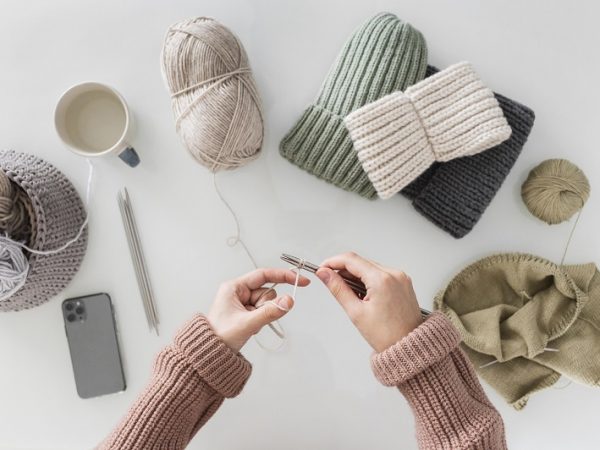01
Aug

Knitting is a fun and fulfilling hobby, ideal for creative spirits who love to craft tangible masterpieces. Whether you want to produce cosy scarves, stylish hats, or practical bags, knitting offers a rewarding journey from yarn to finished product. Learning the basics is super satisfying—you’ll be amazed at how quickly you can start crafting your own stuff. But just like any hobby, it helps to have a few essential tools and try out some helpful techniques to get started.

Knitting needles are the backbone of your creative projects, influencing everything from stitch quality to knitting speed and comfort. As you dive into this creative hobby, understanding the variety of needles available can make your journey smoother and more enjoyable.
Straight knitting needles are the classic choice, ideal for making scarves. They have a pointed end and often a cap on the other to prevent yarn from slipping off. They’re straightforward to use and ideal for beginners.
Circular knitting needles, on the other hand, offer versatility and comfort, particularly useful for larger projects like sweaters or blankets. They are lighter and eliminate the need to constantly turn your work, reducing strain on your wrists and hands.
Choosing the right knitting needle size is also crucial. It can be tricky, so it’s best to check the yarn label for the recommended needle size range. Alternatively, mid-range sizes like 6 to 8 (4.00 to 5.00 mm) are a good starting point. They strike a balance between manageability and versatility, working well with different yarn weights and project types.
When it comes to materials, knitting needles are typically made from wood, metal, or plastic, with bamboo being a popular choice due to its lightness, warmth, and good grip. Wood needles are great for beginners due to their grip and warmth, while metal needles are faster and reduce yarn drag. Plastic needles are lightweight, making them ideal for knitters with hand or wrist issues.
For beginners, single-pointed needles with a knob at one end are recommended for their simplicity. As you progress and specialise in projects like socks or sweaters, your needle preferences may change. It’s wise to start with materials and sizes that suit your comfort and style, ensuring an enjoyable and productive knitting journey without overspending. Remember, the right knitting needle can make all the difference in achieving consistent stitches and enjoying the process of bringing your ideas to life.
Choosing the right yarn is vital as it sets the foundation for your knitting projects. For beginners, superwash wool blends are an excellent choice. Sheep wool is warm, stretchy, and comes in many colours, making it easy to knit with and affordable. Make sure you buy yarn that matches your needle size, as commercial yarns have labels showing the recommended needle size. For example, if you have size 8 needles, look for yarn labelled for size 8-10 needles, and start with the lower number for more uniform stitches. Acrylic yarn is also a good, cheaper alternative.
You will also need a good pair of small, sharp scissors. While you can use regular kitchen scissors, opting for craft scissors specifically designed for yarn is better. They’re usually compact with fine tips for precise cutting and make it easy to snip yarn ends cleanly without fraying. Always keep your scissors sharp and dedicated to yarn cutting to maintain their effectiveness. A handy tip: attach your scissors to a retractable cord or keep them in a designated spot in your knitting bag to avoid losing them.
You’ll also need a tapestry needle for your knitting projects. These needles, which have a large eye and a blunt tip, are perfect for weaving in yarn ends and sewing pieces together. Opt for a metal or plastic needle, depending on your preference—metal needles are durable, while plastic ones are lightweight. Tapestry needles come in various sizes, so choose one that matches your yarn thickness. A curved tip can be especially handy for navigating through tight stitches. This small tool is a game-changer, making the finishing touches neat and professional.
Lastly, you’ll need a bag to store your work in progress. Whether you’re knitting on the train, in the car (as a passenger), or at home with kids and pets, a bag keeps your project safe. You don’t need anything fancy—a simple zipper plastic bag, a cotton tote bag or anything you already have at home will do the job just fine.
